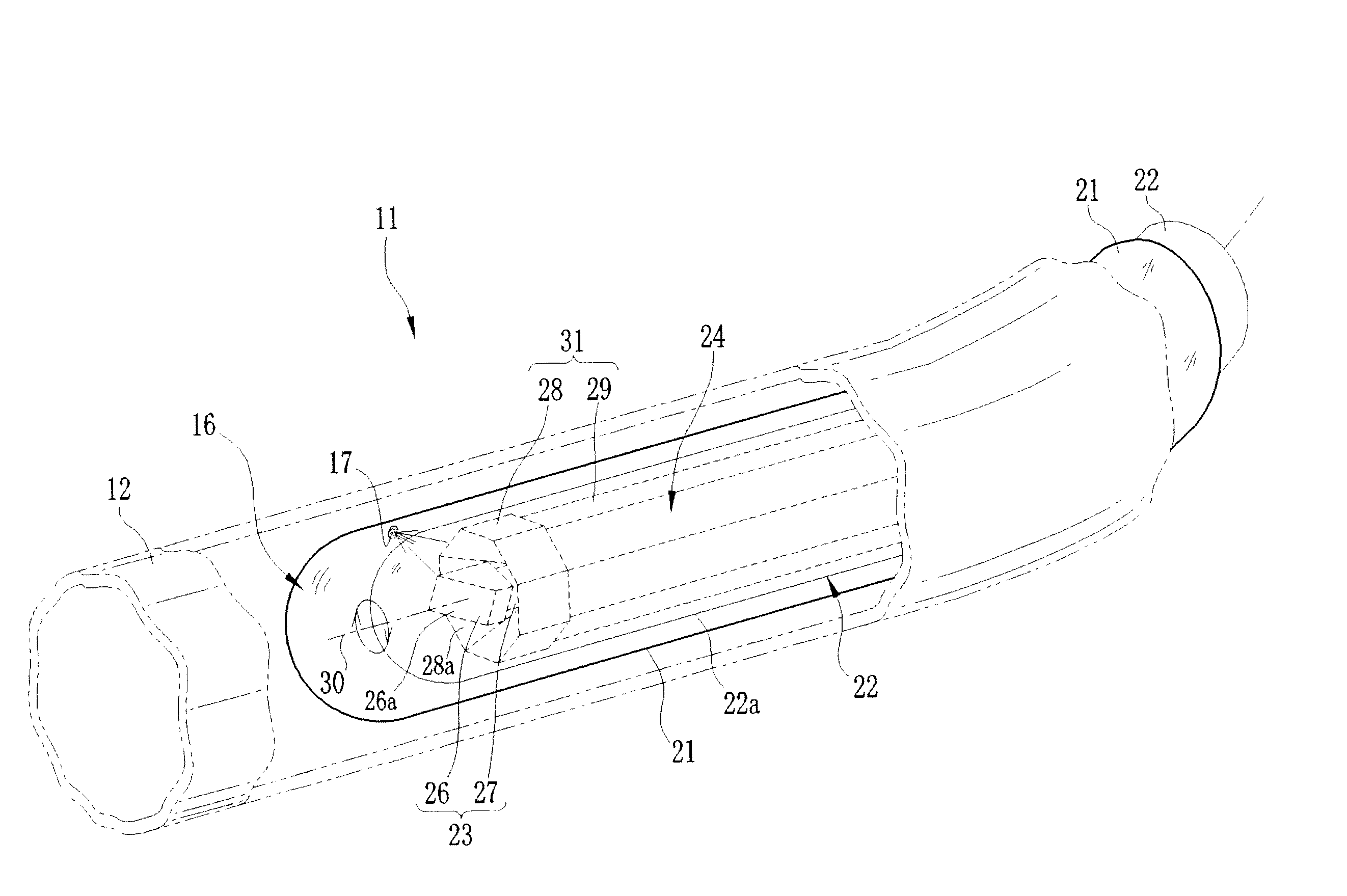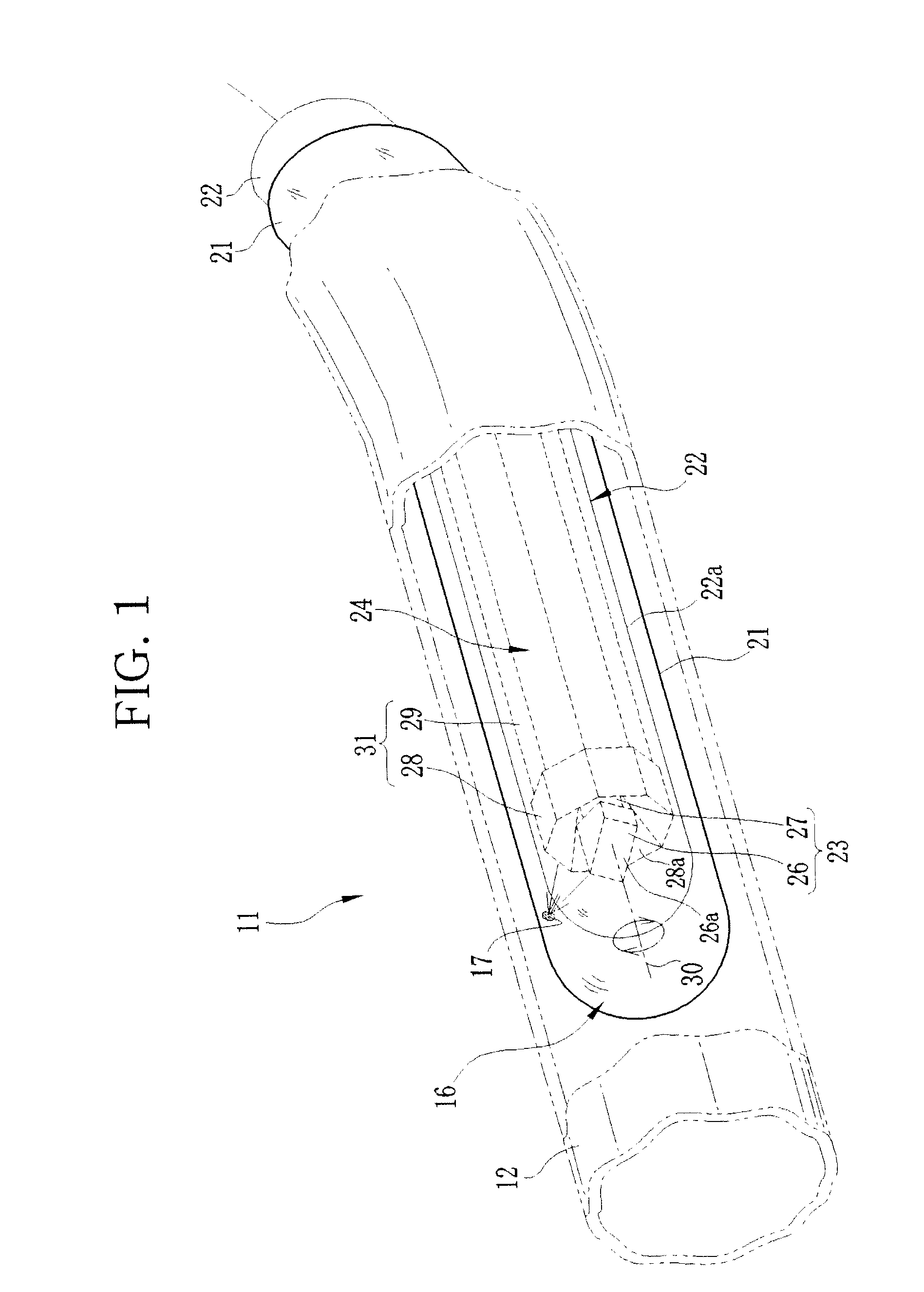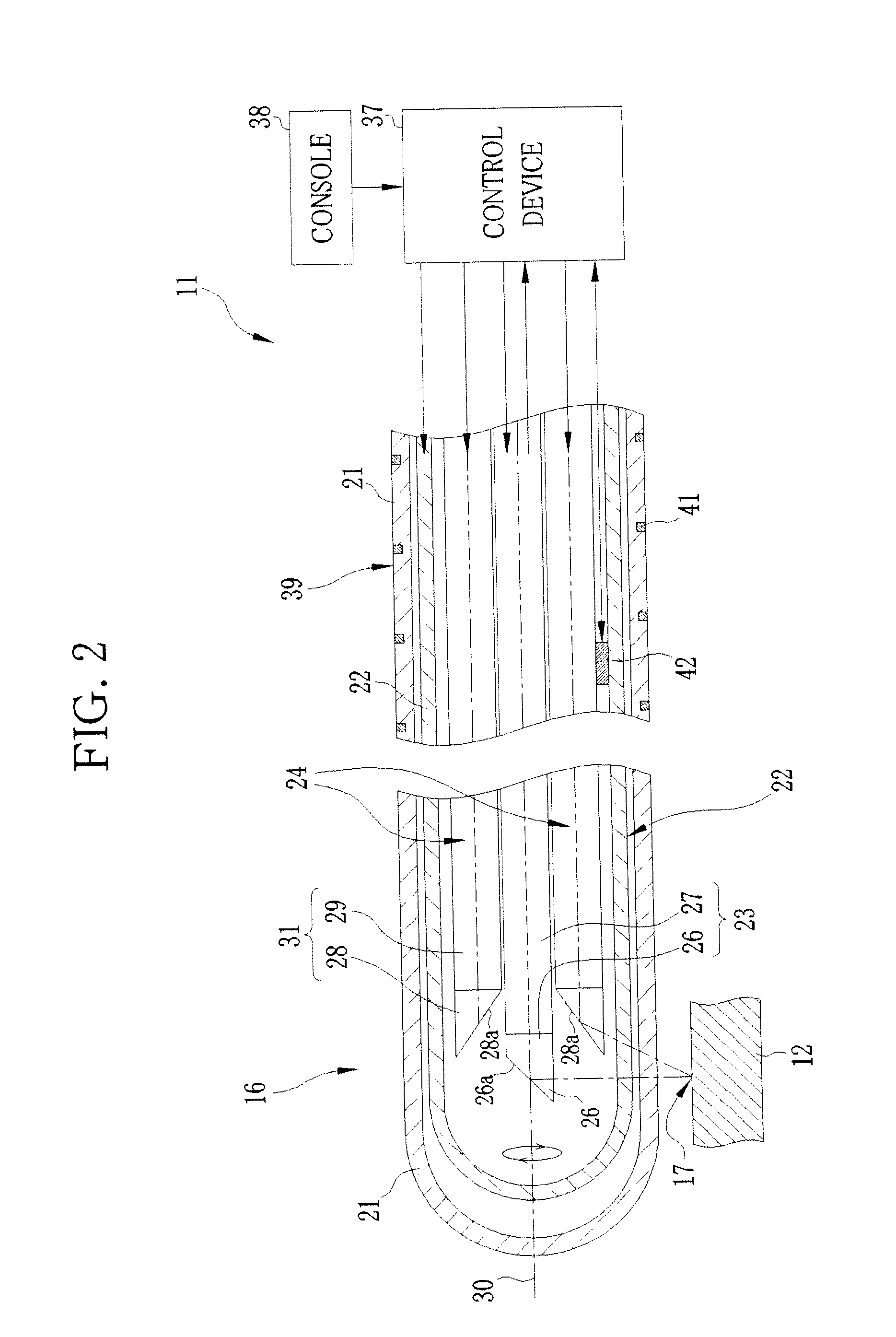Laser treatment apparatus
- Summary
- Abstract
- Description
- Claims
- Application Information
AI Technical Summary
Benefits of technology
Problems solved by technology
Method used
Image
Examples
first embodiment
[0082]In the following first to third embodiments, the laser treatment apparatus 11 is set in the assistance mode. In the first embodiment, the degree of disappearance of the lesion 17 is judged whenever the laser beam has been applied for a predetermined time, and the laser source section 46 is turned on and off in response to a judgment result. When the catheter assembly 16 is introduced into the blood vessel 12, the probe unit 22 sweeps and the tomographic images 72 of the blood vessel 12 are produced from the signal of the observation probe 23.
[0083]The tomographic image 72 is displayed on the monitor 76 in real time, as shown in FIG. 4. The parallel tomographic image73 and the 3D image 74 are produced from the obtained plural tomographic images 72. One of the parallel tomographic image 73 (left of FIG. 4) and the 3D image 74 (right of FIG. 4) selected by the console 38 is displayed on the screen of the monitor 76 together with the tomographic image 72.
[0084]As shown in left of ...
second embodiment
[0097]In a second embodiment, the power level of the laser beam is controlled based on the degree of disappearance of the lesion 17. As with the first embodiment, the observation images are obtained (step S1), and the luminance value of the lesion 17 is designated (step S2). Then, the treatment area is designated in the vessel axial direction of the blood vessel 12 (step S3), and the laser radiation conditions are set up (step S4). When the laser radiation operation is carried out (step S5), the laser treatment apparatus 11 judges whether or not a pixel having the designated luminance value exists in the laser tomographic image 72 (step S6).
[0098]As a result of judgment, when the lesion 17 exists in the tomographic image 72, the lesion disappearance degree judgment section 69 judges the thickness of the lesion 17 in the designated laser beam emitting direction, and inputs the thickness to the CPU 68. The CPU 68 compares the thickness of the lesion 17 to a predetermined threshold val...
third embodiment
[0103]In the foregoing first and second embodiments, the treatment area within which the degree of disappearance of the lesion 17 is judged is designated in the vessel axial direction of the blood vessel 12, but a sectional area centered on a vessel axis may be designated as the treatment area.
[0104]In the third embodiment, as shown in FIG. 14, the observation images are first obtained (step S1), and then the luminance value of the lesion 17 is inputted (step S2). The surgeon or cardiologist encloses the lesion 17 with the treatment area designation lines 92a and 92b while watching the parallel tomographic image 73 (or the 3D image 74) so as to have an approximately equal length to the lesion 17 in the axial direction. The area between the treatment area designation lines 92a and 92b is designated as the treatment area in the axial direction (step S3). Concurrently, the console controller 71, as shown in FIG. 13, displays a circular treatment area designation line 92c that designate...
PUM
 Login to View More
Login to View More Abstract
Description
Claims
Application Information
 Login to View More
Login to View More - R&D
- Intellectual Property
- Life Sciences
- Materials
- Tech Scout
- Unparalleled Data Quality
- Higher Quality Content
- 60% Fewer Hallucinations
Browse by: Latest US Patents, China's latest patents, Technical Efficacy Thesaurus, Application Domain, Technology Topic, Popular Technical Reports.
© 2025 PatSnap. All rights reserved.Legal|Privacy policy|Modern Slavery Act Transparency Statement|Sitemap|About US| Contact US: help@patsnap.com



